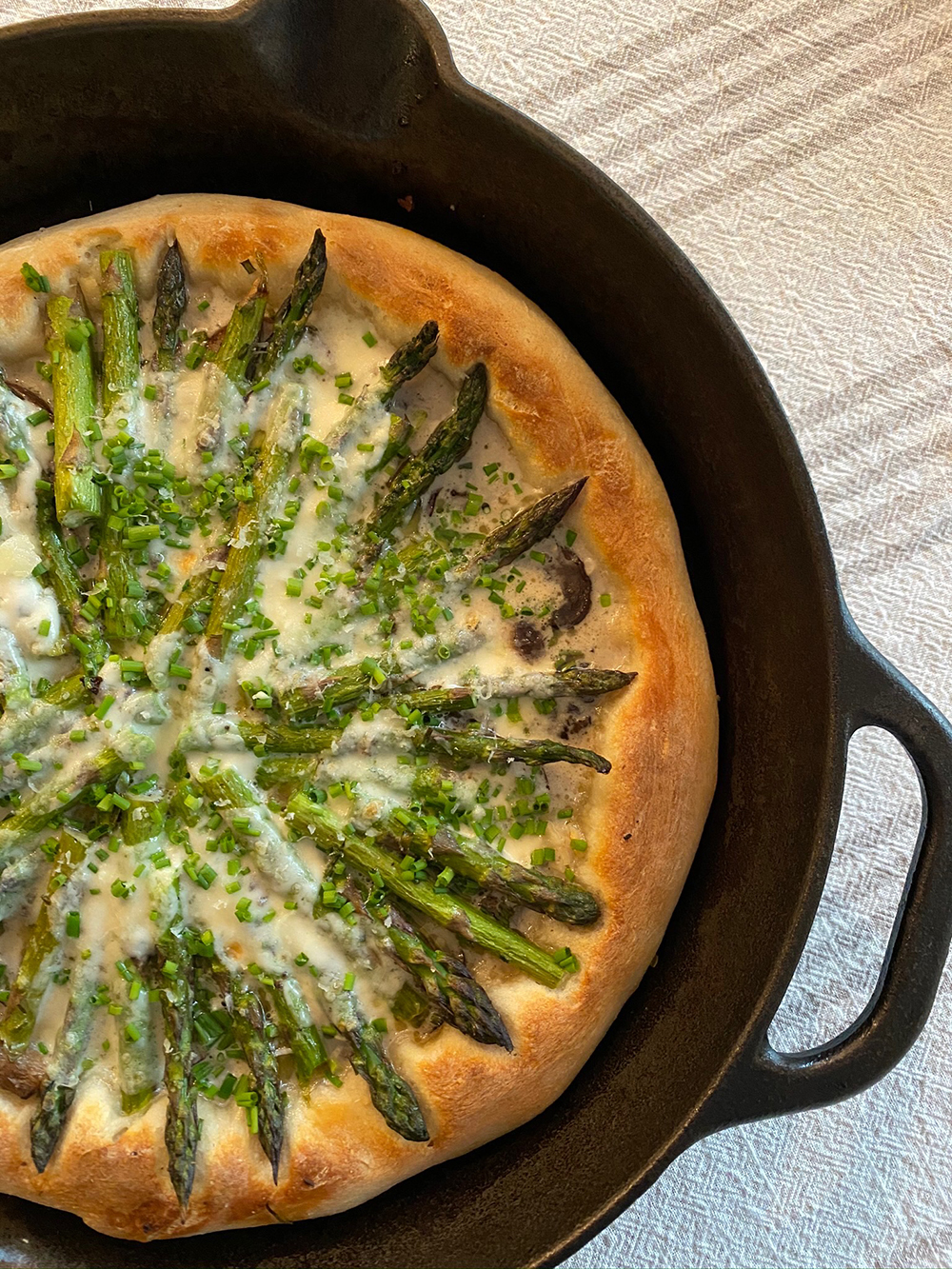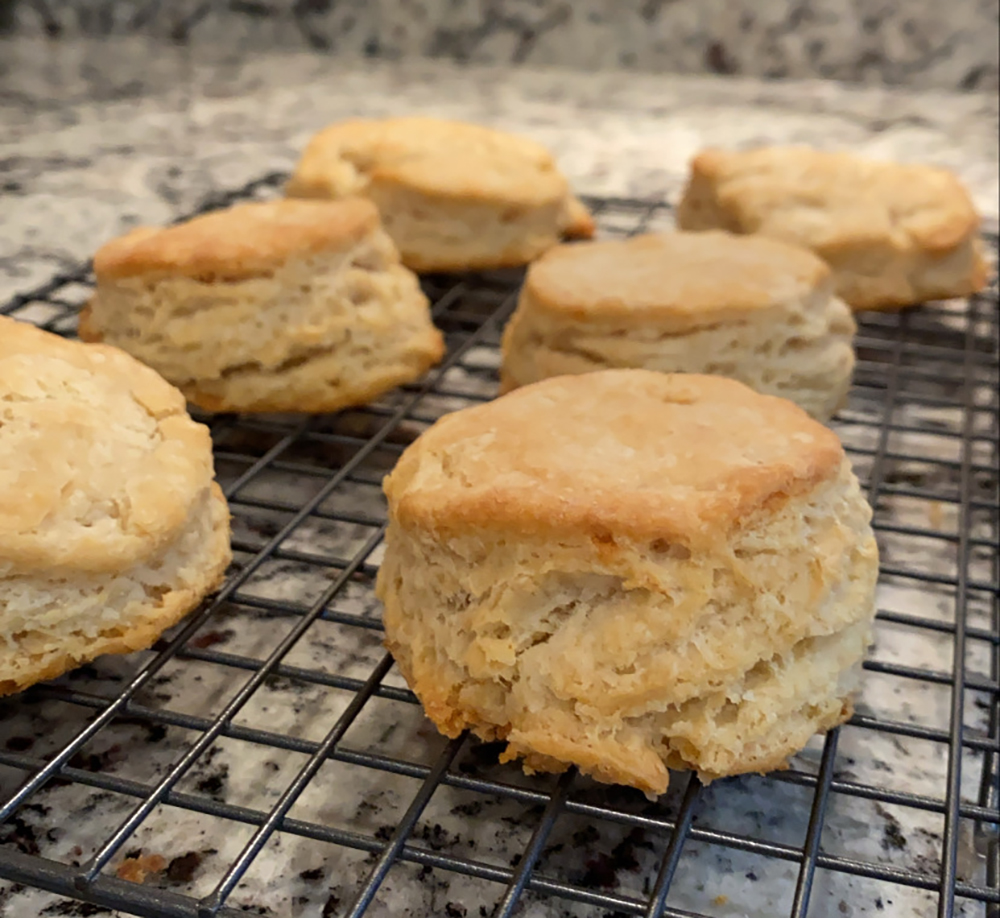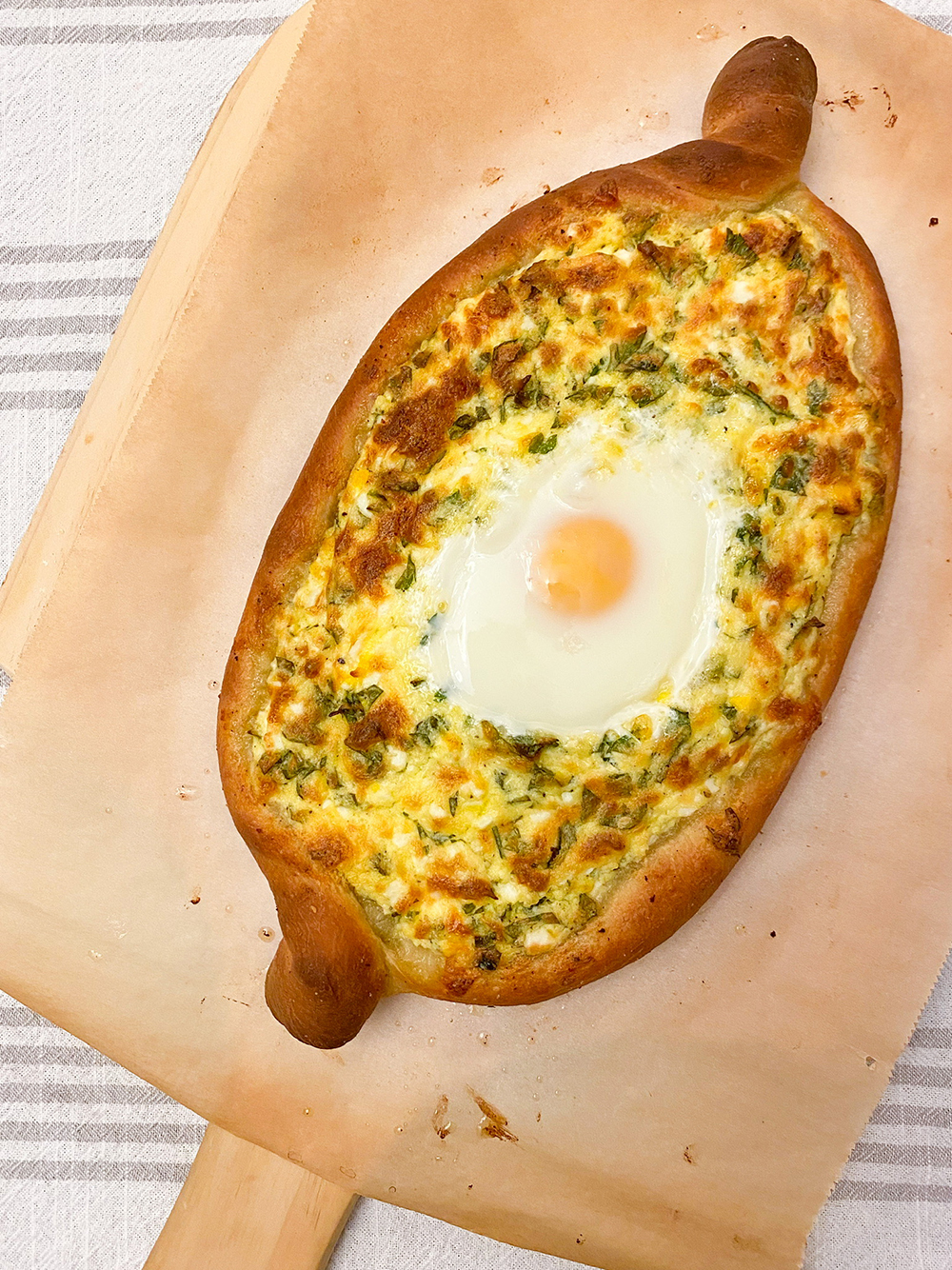Sourdough: What Are All These Quaran-Bakers Trying to Prove?
I don’t mean to sound like a hipster, but I had a sourdough starter *before* it was cool. I was vaguely familiar with the concept of “starter,” and obviously loved to eat sourdough bread, so last May, when I heard that a colleague was generously giving away some of his, I asked for a jar.
It was a bit like bringing home a new pet – my husband and I read and re-read my colleague’s detailed instructions on caring for this curious creature, and we tentatively began to feed it. Much to our delight, it ate with abandon, bubbling, growing, and emitting a deliciously sour and yeasty smell.
Now, sourdough culture has grown into a pandemic way of life. If you haven’t seen a single sourdough project on one of your social media feeds in the last three months, I would be genuinely shocked.
Whether you’ve recently jumped on the sourdough train to occupy the doldrums of quarantine or you’re just curious about what the hell everyone is “feeding” on their countertops, I’m here to share what I’ve learned about sourdough – with expert advice from sourdough baker and propagator, chef Johanna Hellrigl.
What is sourdough?
You could take a deep dive into the history and science of sourdough, but all you really need to know is that sourdough bread relies on wild yeast and lactic acid bacteria (lactobacilli) to leaven it, unlike most other bread, which uses the commercial yeast you can buy in a packet, like active dry or instant yeast.
A sourdough starter is simply made by adding water to flour and waiting. Over time, the lactobacilli and wild yeast that naturally occur in the ingredients and their surroundings start to work their magic. The reaction between these organisms produces gas, causing the mixture to grow, and eventually, a loaf of bread to rise. The process of “feeding” it is simply adding more flour and water and letting it “eat” in a warm space.
Since sourdough bread is fermented with lactobacilli (like kefir, sauerkraut and kimchi), it is easier for the body to digest so much so that some individuals with mild gluten sensitivities report being able to eat sourdough bread without a reaction. It also has a unique, sour flavor profile.
Why has it risen in popularity during isolation?
Before the pandemic, you’d probably see artisan sourdough boules at a farmers market or on a farm-to-table brunch menu, but now even your mom’s best friend’s co-worker’s dog is baking it. What gives?
Aside from fear of FOMO, Hellrigl thinks sourdough has taken hold because everyone needs a project.
“Taking on projects where you can get this tangible result, like bread or pancakes, that’s made from something that you’re nurturing, there’s just almost a good stress relief and a comfort to it,” she says. “It’s a great project to do now more than ever because it definitely requires you, at least on the bread front, to be home and stay home, and watch a loaf of bread be made over two days.”
Hellrigl herself can also be cited as a cause for the craze, at least locally. She began sharing her starter via Instagram in March as a way to drum up support for restaurants. She’s since given away more than 700 containers.
How can I join the sourdough revolution?
If you’re ready to start baking, you could technically DIY it by mixing flour and water at a specific ratio and keeping it on your countertop until it captures wild yeast and gets nice and bubbly. But, this process is actually much more complicated than it sounds, and Hellrigl warns that you’re more likely to end up wasting precious flour than creating a successful starter.
“It can happen, but I find so many people get disappointed when theirs hasn’t turned out to be what they want it to be,” she says. There’s a good chance you’ll end up with mold, or starter that’s dead in the water, so you’re better off beginning your sourdough journey with a vital starter from a trusted source.
Luckily, it’s super easy to procure some starter. If you live in the DMV and are willing to pick up in NoMa, you could DM @chefjohannahellrigl on Instagram. She’ll hook you up with a ready-to-use starter in exchange for your support of a local restaurant or restaurant relief initiative.
If NoMa isn’t convenient for you, chances are you know someone who has some starter they could share. If you ask nicely, most sourdough bakers are more than willing to give you some of their discard (we’ll talk more about that, too).
If all else fails, there’s always the internet. You can order sourdough starter from various online sources, including Etsy and King Arthur Flour (though they are temporarily out of stock, go figure).

What equipment do I need?
Once you’ve got your starter, there are a few other tools and ingredients you’ll need.
- A few wide-mouth quart-size glass mason jars
- A sturdy plastic spatula
- A digital kitchen scale
- A Dutch oven
- Unbleached bread flour (or unbleached all-purpose flour)
- Filtered water
Whatever you do, don’t skip the digital scale – it will make your life 1,000 times easier.
“Don’t even try this without it,” Hellrigl says. Some websites say you can measure by volume, but going by weight is much more precise as you’re less likely to make mistakes. You’ve probably heard, accuracy is crucial in baking. I am a total convert and don’t use measuring cups for any recipes anymore – sourdough or otherwise.
A Dutch oven (or sturdy, oven-safe pot with a lid) is crucial for controlling the moisture and rise of your loaves, so you’ll get better results if you use one.
Using filtered water is key for keeping your starter happy – the delicate organisms do not appreciate the high chlorine content in tap water.
How do I take care of it?
So, you’re wondering what to expect when you’re expecting sourdough? Thankfully, it won’t wake up in the middle of the night crying, and you won’t have to worry about crate-training. It’s just about as much responsibility as a picky house plant.
Depending on how often you’ll want to bake, you should feed your starter daily (baking 24/7) or weekly (baking occasionally). If you’re feeding it daily, you should keep it in a warm place in your home – like a countertop just out of direct sunlight. For weekly feedings, you can keep it in the fridge and then pull it out and put it somewhere warm – like inside your turned-off oven with the light on when you feed it. To feed it, all you do is mix in a ratio of unbleached flour and warm filtered water.
Hellrigl’s recommended ratio, and the one I use, is one part starter to one part flour to one part water. The logistics of feeding and storing the starter is up to personal preference, but I like to use two different glass jars – one for your starter when it’s “fed” and another for when it’s “hungry,” or a “discard.”
For your 1:1:1 ratio, you can do as much or as little as you want, but Hellrigl recommends a maximum of four ounces of each for a quart-sized jar. I do 100 grams of each, which is about the same. Put an empty glass jar on your scale, tare it, and then add your desired quantity of starter, flour and warm water (just about body temperature – 90-100 degrees).
Mix with a sturdy spatula until combined and then cover the jar loosely. You want the lid on, but not screwed all the way down. Now sit back and watch as your starter has a nice little picnic. It should bubble and expand over a few hours. If you’re keeping it in the fridge for weekly feedings, wait for several hours until you see lots of action and a nice sour smell, then screw the lid all the way on and return to the fridge until use. The cold slows down the fermentation process so your starter will stay alive until the next feeding, a week later.
When you’re ready to bake, grab the fed starter and use however much your recipe calls for. Feed it again into a clean jar. The remaining starter is discard! Repeat this process, and keep your jars labeled with a piece of painter’s tape. Mine say “fed” and “famished” because I think I’m hilarious.
The discard isn’t active, so it can’t be turned into a nice crusty loaf of bread, but don’t be fooled by the name. This stuff does not belong in the trash – there are endless possibilities for what it can be used for. It adds a nice cheesy flavor to biscuits and crackers. It’s the perfect consistency for crumpets and pizza dough. It makes a mean pretzel. It can be a lovely breakfast pancake.
These recipes are more forgiving than sourdough bread because you’re using another leavening agent like commercial yeast or baking powder, but you’ll still get a little hint of sourdough tang. You can also share your discard with friends and spread the sourdough love.
Ideally, you shouldn’t go more than a week between feedings, but if you forget and go a couple of weeks, chances are your starter will be fine. I’ve definitely had some neglectful moments and mine is still kicking. It’s better to feed it regularly though, because then you’ll have plenty of starter and plenty of discard to fuel your baking.

How do I know if it’s healthy?
Just like any living creature, it’s natural to wonder if your starter is healthy and happy? Does she have a good life? The good news is, your starter is much more resilient than you think.
“Unless you legit put it in the oven or it gets to 120-something degrees, that’s when you’re going to kill your starter,” Hellrigl says.
If you skip a week or two and your starter ends up with some grayish liquid on the top, don’t fret. This is just a byproduct of the fermentation known as hooch. You can stir it back in or pour it off if you prefer.
You should be able to tell pretty unequivocally when your sourdough has gone bad. A funky smell (different from the natural sour smell) or funny colors (pink, red, green, blue) are your red flags. I’ve never had this happen, but I’ve heard the biggest risk is if you start your own. As long as you have a healthy starter to begin with, you should be fine.
What if my bread won’t rise?
For every beautiful, holey, crusty sourdough loaf you see on Instagram, there is a sad, flat, close-textured one that didn’t make it to feed fame. Don’t get discouraged if your first loaf isn’t going to win best in show. Every starter is different – consistency, flavor, activity – so you have to experiment a little with recipes. These are the three most common issues:
Temperature: Many recipes say to keep your dough at “room temperature,” but this is such an arbitrary directive. Hellrigl says 75-80 degrees is ideal here. My house is never that warm, so I always keep my starter or dough in the oven to help it rise.
Vitality: If your starter is a little lethargic – not a ton of bubbling – you can give it a little “fertilizer” with a more nutritious flour. Hellrigl recommends mixing in some rye flour for one feeding before returning to bread flour.
Technique: Properly kneading and folding your dough is how your bread builds structure to hold the shape of a loaf and creates those lovely holes you see in a slice. If your form isn’t great, it could affect your results. Hellrigl recommends watching baking videos on YouTube to master common techniques.
Where can I learn more?
My sourdough bible is King Arthur Flour.

What can I make with it?
King Arthur’s website has hundreds of recipes for sourdough breads, as well as what to do with all your discard. Hellrigl also shares her own recipes via Instagram. She recommends starting with her easiest sourdough loaf. Her most popular discard recipes are sourdough banana pancakes and garlic confit knots.
What are you waiting for? Get baking. I know you’ll rise to the occasion.
Enjoy this piece? Consider becoming a member for access to our premium digital content and to get a monthly print edition delivered to your door. Support local journalism and start your membership today.

